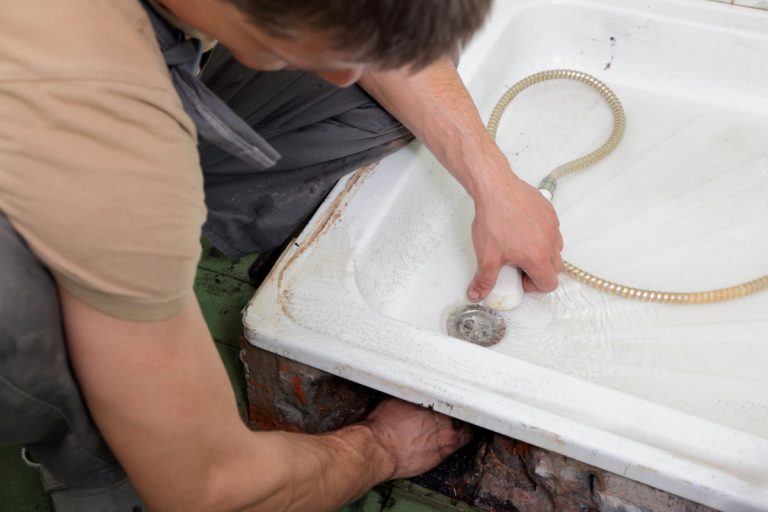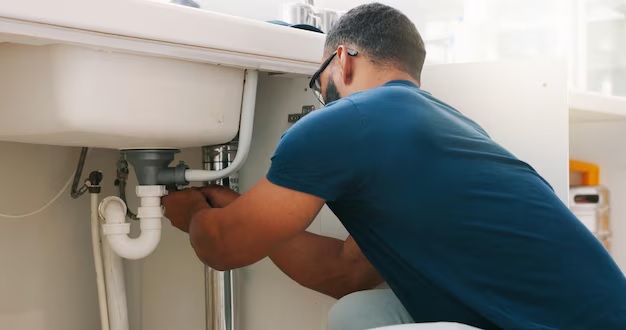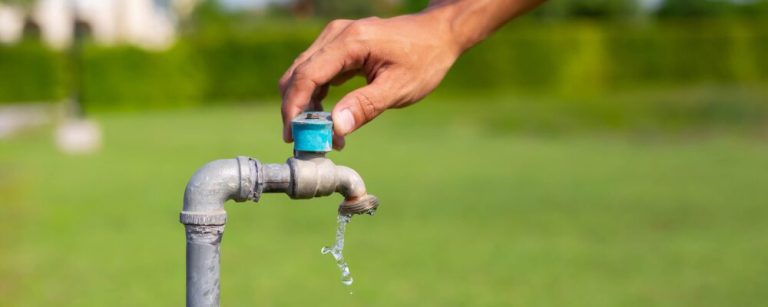
In the realm of home maintenance, plumbing is often the last thing on people’s minds until a problem arises. When issues do occur, two major aspects frequently come into focus: the need for repairs and concerns over water pressure. These two elements—repairing faulty plumbing and managing water pressure—are both essential to the effective functioning of any home’s plumbing system. But when faced with a plumbing dilemma, which one should take precedence? Is it better to focus on fixing specific problems (repairs), or is managing and optimizing water pressure the most critical factor?
The answer isn’t straightforward, as the choice largely depends on the nature of the issue at hand. Nonetheless, understanding the connection between repair and water pressure is crucial for homeowners to make informed decisions about their plumbing systems. This article delves into the significance of both plumbing repairs and water pressure optimization, analyzing how they affect one another and which should be prioritized in different situations.
Understanding Plumbing Repairs
Plumbing repairs are often reactive measures taken to address specific issues within a home’s water supply and drainage system. Over time, pipes can degrade, fixtures can fail, and various parts of a plumbing system can break down, leading to inconvenient or potentially costly problems. Plumbing repairs can range from minor tasks, like fixing a leaking faucet, to major undertakings such as replacing burst pipes or addressing complex drainage issues.
Common Plumbing Repair Issues
-
Leaky Faucets: One of the most common and simple repair issues, leaky faucets waste both water and money. The primary causes for leaks include worn-out washers, corroded valve seats, or issues with the O-rings.
-
Clogged Drains: Whether it’s a slow-moving drain or a completely blocked one, clogs can be an ongoing issue. Common culprits include hair, grease, soap scum, and debris.
-
Broken Pipes: Pipes can burst or crack due to age, pressure buildup, freezing, or tree root intrusion. This is one of the more serious plumbing issues, requiring professional intervention.
-
Water Heater Problems: Issues such as a lack of hot water, strange noises, or inconsistent temperatures often point to problems with the water heater. Sediment buildup, faulty thermostats, or broken heating elements are common causes.
-
Toilet Issues: A running toilet, weak flush, or leaking toilet tank are all problems that can be repaired. These issues can stem from faulty flappers, worn-out seals, or clogging.
The Importance of Timely Plumbing Repairs
Timely plumbing repairs are crucial for preventing further damage. Small leaks, if left unaddressed, can result in higher water bills, water damage to floors and walls, and mold growth. A clogged drain can lead to sewage backup or water flooding, damaging the home’s interior. Broken pipes, especially in colder months, can wreak havoc by flooding parts of the home. The sooner repairs are made, the less likely the issue will escalate into a more serious, expensive problem.
Water Pressure: Understanding Its Role in Plumbing
Water pressure is another critical aspect of a functional plumbing system. It is the force that pushes water through your pipes and delivers it to faucets, showers, and appliances. Water pressure affects nearly every aspect of daily life—how well your shower works, how fast your washing machine fills, and even how effectively your sprinkler system waters your lawn.
What Is Ideal Water Pressure?
Typically, the ideal water pressure for a home’s plumbing system falls between 45-60 psi (pounds per square inch). Too low of a water pressure can make everyday tasks like showering and cleaning less effective, while too high of a pressure can cause damage to your pipes, leading to leaks and reduced lifespan of plumbing fixtures.
Common Water Pressure Issues
-
Low Water Pressure: This is perhaps the most common complaint among homeowners. Causes include clogged pipes, a partially closed main water valve, issues with the municipal water supply, or a faulty pressure regulator.
-
High Water Pressure: Excessively high water pressure can cause pipes to burst, fixtures to wear out quickly, and water leaks to develop. It can be caused by a failing pressure regulator, municipal supply issues, or old, outdated plumbing systems.
-
Uneven Water Pressure: Some areas of the home may have stronger water pressure than others. This can be caused by pipe blockages, irregularities in the plumbing system, or issues with the main water supply.
The Importance of Managing Water Pressure
Proper water pressure ensures the efficient and safe operation of a plumbing system. Low water pressure can lead to weak water flow, making daily tasks more time-consuming. On the other hand, high water pressure can lead to costly damage. By maintaining optimal water pressure, homeowners can extend the life of their plumbing system, prevent leaks, and avoid high water bills caused by inefficiencies.
Repair vs. Water Pressure: Which Should Take Priority?
Now that we’ve explored the significance of both plumbing repairs and water pressure management, the next question is: which one is more important when it comes to ensuring a fully functional plumbing system?
When Plumbing Repair Should Take Precedence
In cases where specific plumbing components are malfunctioning—such as a leaky pipe, a blocked drain, or a faulty water heater—repair should naturally take precedence. Plumbing repairs are necessary to maintain the system’s integrity and to prevent further damage. For example, if you have a burst pipe, the water can flood your home, leading to structural damage, mold growth, and expensive repairs. In such a case, repairing the pipe takes priority over concerns about water pressure.
Similarly, if your toilet is leaking or your water heater is malfunctioning, those issues must be addressed promptly to avoid water wastage, comfort disruption, or even property damage.
When Water Pressure Management Should Take Precedence
In contrast, water pressure should take precedence if there are noticeable problems with water flow or if high water pressure is causing damage to your plumbing system. If you’re experiencing low water pressure across your home, it could be a sign of underlying issues such as clogged pipes, a broken pressure regulator, or sediment buildup in your water heater. These issues can lead to inefficient water use and potential damage to plumbing fixtures.
Conversely, if you discover that your home has high water pressure, you risk causing unnecessary strain on your pipes, potentially leading to costly repairs. High pressure can wear out seals and gaskets and cause leaks over time. In this case, installing or repairing a pressure regulator should take precedence to ensure your home’s plumbing system remains safe and efficient.
When Both Repair and Water Pressure Need Attention
There are situations where both plumbing repair and water pressure management need to be addressed simultaneously. For instance, if low water pressure is caused by a leak in the plumbing system, repairing the leak and addressing the pressure issue will be necessary. Similarly, if high water pressure has led to damaged pipes or worn-out fixtures, both repairing the damaged sections and regulating the pressure will be required.
In some cases, an issue with water pressure can be symptomatic of a larger plumbing problem. For example, sediment buildup in pipes can both clog the system and reduce pressure. In such cases, the issue needs to be diagnosed holistically, with both the repair and pressure regulation taken into account for a comprehensive solution.
Conclusion: A Holistic Approach to Plumbing Maintenance
While there isn’t a one-size-fits-all answer to whether repair or water pressure is more important, the reality is that both elements play a crucial role in maintaining a well-functioning plumbing system. When faced with a plumbing issue, it’s essential to assess the problem thoroughly to determine whether immediate repairs or adjustments to water pressure are necessary. In many cases, the two are interconnected, requiring a holistic approach that addresses both the functionality and safety of the plumbing system.
By staying proactive with regular maintenance, understanding the impact of water pressure, and promptly addressing plumbing repairs, homeowners can ensure that their plumbing systems work at peak efficiency, preventing more costly issues down the line. Whether it’s fixing a leaking pipe or regulating water pressure, paying attention to both aspects of plumbing will safeguard your home, protect your investment, and enhance your comfort.
You May Also Like
Local Plumbing Expertise You ...
22 August 2025
How to Improve Your Home wit ...
06 February 2025
Top 10 Water Pressure Tips f ...
22 January 2025
Popular Post
Expert Insights on Installing Solar Power Systems
28 October 2025Local Plumbing Expertise You Can Trust in Killeen
22 August 2025Innovative Solutions for Refurbishing Commercial Spaces
14 August 2025How to Improve Your Home with Valuation and Agents
30 April 2025Recent Posts
- Expert Insights on Installing Solar Power Systems October 28, 2025
- Local Plumbing Expertise You Can Trust in Killeen August 22, 2025
- Innovative Solutions for Refurbishing Commercial Spaces August 14, 2025
- How to Improve Your Home with Valuation and Agents April 30, 2025
- The Beginner’s Guide to Design in Home Improvement April 24, 2025
- How to Improve Your Home with Maintenance and Repair April 16, 2025
- Why Your Roofing Strategy Needs a Flat Roof April 10, 2025
Archives
- October 2025 (1)
- August 2025 (2)
- April 2025 (10)
- March 2025 (2)
- February 2025 (7)
- January 2025 (8)
- December 2024 (6)
- November 2024 (6)
- October 2024 (6)
- September 2024 (5)
Categories
- Cleaning & Maintenance (5)
- Gardening & Outdoor (5)
- Home Decor (5)
- Home Improvement (5)
- HVAC (5)
- Moving (5)
- Plumbing (6)
- Real Estate & Property (5)
- Roofing (6)
- Smart Home (6)





